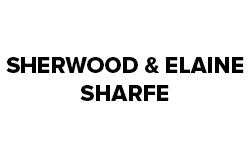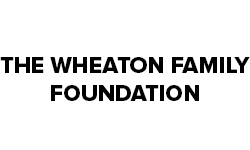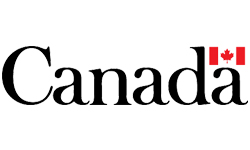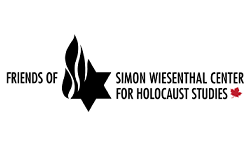Part B Learning Plan 30 – Social Studies, History, Native Studies
Inquiries are identified and connections to Big Ideas are noted. Teachers may begin with any inquiry or combine inquiries to use the approach that resonates best with their students.
What does it mean to be an engaged Canadian citizen?
- What beliefs do engaged citizens share?
- Whose worldviews make up Canadian worldview?
Big Ideas Explored:
- Beliefs and worldview shape our views of Canadian citizenship;
- There are factors that encourage and inhibit engaged citizenship;
- Canadians have processes to address and resolve issues regarding rights and responsibilities as citizens in contemporary Canada;
- Canada is challenged to accommodate the needs of diverse populations with competing interests;
- Events in Canadian history influenced our current perspectives on rights and responsibilities of citizenship; and,
- The evolution of media and technology has impacted perceptions and practices of citizenship.
Inquiry
Why do we have the Charter of Rights and Freedoms, Human Rights Codes, and our Constitution?
- How do those documents reflect and influence Canadian beliefs?
- Are core Canadian beliefs possible in a multi-cultural society?
Big Ideas Explored:
- The Charter of Rights and Freedoms, Human Rights Legislation, federally and provincially, and the Canadian Constitution are documents that guide Canadian behaviour, policies and practices and form the essential elements of Canadian worldview;
- Canadian First Nations and Treaty rights are historical and documented, but often interpreted through worldviews that do not reflect:
- the common elements of First Nations knowledge and philosophy that provided the basis for First Nations and Treaty rights;
- the impacts of Canada’s expansionism on the interpretation of Canadian First Nations and Treaty rights; and,
- the influences of diversity and Canadian multicultural policy.
Questions to Guide Inquiry
Essential questions and guiding questions are posed to support teachers as they facilitate students’ exploration of the inquiry. Teachers are encouraged to adjust the wording, omit, or add questions as they choose.
- What are the benefits and limitations of ideology in guiding beliefs and behavior?
- How are a country’s values and beliefs reflected in their approaches to conflict resolution?
- How are an individual’s values and beliefs reflected in their approaches to conflict resolution?
- What are Canada’s issues of conflict nationally and internationally?
- What is Canada’s record in conflict resolution, nationally and internationally?
- How are a country’s values and beliefs reflected in their approaches to conflict resolution?
- How does ideology influence our view of social justice?
- What social justice issues currently impact Canadian society?
- What is the relationship between ideology and action on these issues?
- How does a society structure itself to find a balance between the rights of opposing constructs, i.e. minorities and majorities; regions and the nation; individual rights and collective rights; and, what factors influence the finding of this balance?
- How are Canadian views of social justice reflected in our policies and documents that address the issues above?
- How well did Canada do?
- How does society achieve a balance between the responsibilities of citizens to society and society’s responsibilities to its citizens?
- What events have had an impact on Canada’s perspectives of citizenship rights and responsibilities?
- How are those impacts evident?
- What responsibility do we as citizens have to our neighbours?
- What responsibility does Canada have to the global community?Surface additional questions that students have.
- Has Canadian society been organized to reflect national values and beliefs?
- Whose worldviews are represented in our citizenship behaviours /agreements, locally, nationally and globally?
- What historical influences are evident in our current citizenship behaviours/ agreements, nationally, and globally?
Surface additional questions that students have.
Citizenship challenges are ongoing. Teachers are challenged to bring current issues into the classroom so that students can make citizenship connections.
CONNECT TO TOPIC AND SURFACE STUDENTS’ THINKING ABOUT …
- Surface student thinking in response to the prompts or hook questions posed.
- Add questions from students; adjust the wording of questions as needed.
- Chart student thinking for later reflection.
This inquiry examines the beliefs, constructs, and influences that shape views of Canadian citizens and the degrees to which policies increase or decrease engagement in citizenship activities. Students will also consider the impact of technology in all aspects of citizenship and mobilization.
Inquiry
What does it mean to be an engaged Canadian citizen?
- What beliefs do engaged citizens share?
- Whose worldviews make up Canadian worldview?
- How do our beliefs and worldviews shape our views of Canadian citizenship?
Choose the questions that resonate best with students.
- What are the indicators/criteria of engaged citizenship?
- How do we know when to get involved?
- What are the degrees of engagement necessary to determine whether a society is a democracy?
- What are the factors that encourage and inhibit engaged citizenship?
- What is the impact of media and technology in the perception and practice of citizenship?
Canadian government is based on principles of:
“Peace, Order, and Good Government”.
- What beliefs are reflected in those statements?
- What kinds of citizens might it create?
- How are the ideological principles in the statement above, reflected in Canadian policy, legislation?
- e. gun control, Canada’s peace-keeping forces, seat belt legislation, cell phone usage legislation, other.
See Further Investigations Suggestions, Part C for comparisons to USA.
DEVELOPING UNDERSTANDING
Have students divide into groups and choose a particular area of study. Each group must find out the information in the questions posed. Encourage students to present information learned in a variety of modes including speaking, writing, drama, multimedia, or other modes so that all students have an entrance point for demonstrating their learning and understanding.
This part of the inquiry connects Canada’s actions to an ideology or worldview to consider the kind of citizens and degrees of citizenship engagement each creates. Students examine Canada’s history in treatment of their citizens to see how ideology is reflected in that behaviour.
- What are the benefits and limitations of ideology in guiding beliefs and behavior?
- How are a country’s values and beliefs reflected in their approaches to conflict resolution?
- What does Canada’s method of conflict resolution, say about its citizenship beliefs?
- What are the evolutions of citizenship in Canada?
- What kind of Citizen is Canada?
Using the jigsaw research process, have students explore the answers to these questions in the following historical examples or in contemporary conflict issues. What themes are surfacing?
- How have these events influenced our perspectives on rights and responsibilities of citizenship?
- BNA Act
- Impacts of Canada’s performance as a nation in WWI or WWII
- Great Depression of 1930’s
- Choose your own
- What were the impacts of some of these change events? How did they shape Canada’s history and relationship with its citizens?
- First contact between the Aboriginal peoples and the Europeans
- The Quebec Act
- The Rebellions of 1837
- The resettlement of the Canadian Northwest at the end of the 19th century
- The Quiet Revolution in Quebec. (Unit 1)
- Changes to the Indian Act 1876 – 1968 leading to Bill C-31 1985
- Idle No More Movement
DEVELOPING UNDERSTANDING
For all these inquiries, teachers are encouraged to connect current events to the discussions and ideas being explored.
Why do we have the Charter of Rights and Freedoms, Human Rights Codes, and our Constitution?
- How do these documents influence Canadian beliefs?
- Are core Canadian beliefs possible in a multicultural society?
Students will:
- Examine the Charter of Rights and Freedoms, Human Rights Legislation, federally and provincially, and the Canadian Constitution.
- Identify
- core beliefs of document
- the history behind each document
- the impact of the document
- Gain insight into Canadian Indigenous and Treaty rights by:
- Identifying the common elements of Indigenous knowledge and philosophy that provided the basis for Indigenous and Treaty rights.
- Exploring the factors of diversity and the impact of Canada’s expansionism of the 1800’s that impacted the interpretation of Canadian Indigenous and Treaty rights.
- Comment on the changes in Canada’s relationship with First Peoples during these time periods.
- Alliance 1600 – 1814
- Marginalization 1763 – 1923
- Wardship 1868 – 1969
- Move toward Self-Governance 1969 – present
- Truth and Reconciliation Commission
- Examine Canada’s Multicultural policy
- What has been the impact of Canadian multicultural policies like the Temporary Foreign Worker Program on Canadians?
- What impact have programs like this had on Canadian beliefs?
APPLY AND EXTEND KNOWLEDGE
Teachers are encouraged to use the Historical Thinking Concepts constructs in exploring any of the inquiries.
- Consider which responsibilities individuals and groups collectively assume for each other.
- What is needed to act on that responsibility?
Identify some current social, social justice, national justice issues in which students are interested.
- What is the current status and impacts of the issues?
- What is the history of resolution for the issue?
- What themes are surfacing in the history of resolution?
- What ideology is reflected in the resolution?
- What suggestions do student have as to how they would redress/ try to solve the issue?
When thinking about multiculturalism and raising awareness of the perceptions of different cultures and the effects of inequities, background reading and prior discussion may be needed to prepare the class and some teachers for discussion about privilege, self-awareness, culture, racism, etc. Two websites that provide useful information are:
- The Centre for the Study of Race and Ethnicity in America: https://www.brown.edu/academics/race-ethnicity/
- Robin DiAngelo PhD, Critical Racial and Social Justice Education: https://robindiangelo.com
See also Part C Resources for additional supports
EVIDENCE OF LEARNING
- What do you think now about…?
- What has caused your thinking to change?
- What evidence supports your thinking?
- Why is this information important to know?
- How will you use this information?
What does it mean to be an engaged Canadian citizen?
- What beliefs do engaged citizens share?
- Whose worldviews make up Canadian worldview?
Inquiry
Why do we have the Charter of Rights and Freedoms, Human Rights Codes, and our Constitution?
- How do those documents influence Canadian beliefs?
- Are core Canadian beliefs possible in a multicultural society?
Essential Questions: Guiding Questions
- What are the benefits and limitations of ideology in guiding beliefs and behavior?
- How are a country’s values and beliefs reflected in their approaches to conflict resolution?
- How are an individual’s values and beliefs reflected in their approaches to conflict resolution?
- What are Canada’s issues of conflict nationally and internationally?
- What is Canada’s record in conflict resolution, nationally and internationally?
- How does ideology influence our view of social justice?
- What social justice issues currently impact Canadian society?
- What is the relationship between ideology and action on these issues?
- How does a society structure itself to find a balance between the rights of opposing constructs, i.e. minorities and majorities; regions and the nation; individual rights and collective rights; and, what factors influence the finding of this balance?
- How are Canadian views of social justice reflected in our policies and documents that address the issues above?
- How well did Canada do?
- How does society achieve a balance between the responsibilities of citizens to society and society’s responsibilities to its citizens?
- What events have had an impact on Canada’s perspectives of citizenship rights and responsibilities?
- What responsibility do we as citizens have to our neighbours?
- What responsibility does Canada have to the global community?
- Has Canadian society been organized to reflect national values and beliefs?
- Whose worldviews are represented in our citizenship behaviours /agreements, locally, nationally and globally?
- What historical influences are evident in our current citizenship behaviours/ agreements, nationally, and globally?
- Injustices of today have roots in the past.
- Canadian society is challenged to manage the co-existence of diverse worldviews.
- Canadian citizens work to achieve a balance between rights and responsibilities through learning and action.
- Canadian society has inequities and elimination of these is beneficial for all Canadians.
- For each individual, becoming aware of racism in Canadian society is an evolutionary process and a precursor to change.
- As citizens of local, national, and global communities, Canadians are conscious, self-reflective, and critical of their own beliefs and actions and seek to make positive change.
- Citizens show flexibility of mind.
STUDENT CITIZENSHIP JOURNAL OPPORTUNITIES
Students are keeping a Citizenship Journal to reflect upon their developing views of citizenship. This section provides prompts for student journals. Students are invited to choose one that interests them or propose their own. Students can also respond to any of the essential questions.
Students are encouraged to respond using a variety of genres.
- How strong is Canada’s democracy?
- When you come of voting age, will you choose to vote? How did you reach your decision?
- What was your greatest surprise in learning that occurred in the inquiries? Why?
- Is your Canadian citizenship important to you? Explain your thinking.
© 2024 Concentus Citizenship Education Foundation Inc. All Rights Reserved.










